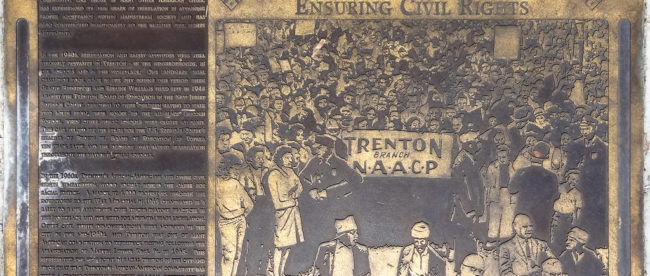Preserving the Future of the Past

Preserving the Future of the Past
Charles Wesley Armstrong isn’t important enough to warrant a google search overflowing with information or even a Wikipedia page. However, he is important enough to have a park named after him.
The park, located on Upper Ferry Road, is between a church cemetery and a shopping center. It includes several baseball and softball fields, as well as batting cages and other accouterment related to America’s pastime.
This park is part of the fabric of Ewing Township. Another part of this fabric is the local history of the area and areas surrounding it.
“They [people in the community] need to have pride in their local history.” Says Lois Rivera, a resident, and member of the Historical Preservation Committee.
A group of individuals hopes to preserve and elevate this history. Ewing Township’s Historical Preservation Committee meets almost every month and works towards protecting the historical culture and aspect of Ewing.
The committee is small and sometimes overlooked in favor of bigger committees and meetings. “Sometimes we get kicked out or pushed into the corner.” laughs Linda Brown, a member of the committee.
Although they may not garner a lot of attention, the committee has the important purpose of preservation. They work to preserve and call attention to local history, a goal that will have effects in both the near and far future.
This particular group is almost brand new after the passing of a particularly influential, long-standing member. The longest standing member is Randal Marsola, who is in his second year.
“We’re new, we’re lost,” Mr. Marsola says, explaining the group’s predicament. “No don’t say that,” He reframes it. “We’re new, we’re eager to learn.”
Other members of the committee include Lois Rivera, Linda Brown and Jim Catelize, who were all new and eager to dig into a big project.
This green group may be lacking in experience, but not in passion. The meeting was colored with numerous stories and tidbits of information ranging from urban legend to historical fact.
Mr. Catelize, a lifetime resident of Ewing, told the story of an urban myth come true concerning a hidden tunnel used to secretly deploy airplanes during World War II. The tunnel was simply a story until developers excavated in its supposed location and actually found it.
“It’s really important that people understand what history’s gone on here.” Said Mrs. Rivera.
They also spoke at length about the Revolutionary history of Ewing and the events that happened here and the way they changed history.
Mrs. Rivera spoke about “A little pocket park” that was less notable than the Dunkin Donuts near it. That park marks the site where George Washington decided to split his troops into two groups, a decision that changed the tide of the Revolutionary War.
“There’s a pile of debris there now.” She said. “If it weren’t for that decision we’d all be speaking the King’s English.”
After rudimentary discussions and a quorum vote, the committee set their sights on a new undertaking: Creating a new historic district.
The district in question is a neighborhood called Altura. Supposedly, this neighborhood was the first planned community by European settlers in the state of New Jersey.
The committee hopes that by officially declaring the neighborhood a historic district, that history can be preserved and observed by future generations.
“Without being in the historical commission they [the buildings] will be torn down.” Says Mrs. Rivera.
This is true in the case of the house that once belonged to Charles Wesley Armstrong. According to the Ewing Township website’s page on municipal parks, Armstrong was mayor of Ewing for seven years before becoming the President of the New Jersey State Senate.
The stone house traded owners often in its history before being rented out this summer according to Mr. Catelize.
Despite the house’s rich, longstanding history and beloved status as a visual landmark, it was completely demolished this past summer.
“They had it leveled in a day.” Said Mr. Marsola.
This kind of destruction is exactly what the committee hopes to prevent. To promote their cause, they hope to partner with the local historical society and do community outreach.
“This mission is really outstanding,” says Mrs. Rivera. “It is the beginning of something positive, no matter what it turns out to be.”
Although their mission is squarely focused on the past, the community will have to look to the future to see if their goals are met and if their mission is a success.

